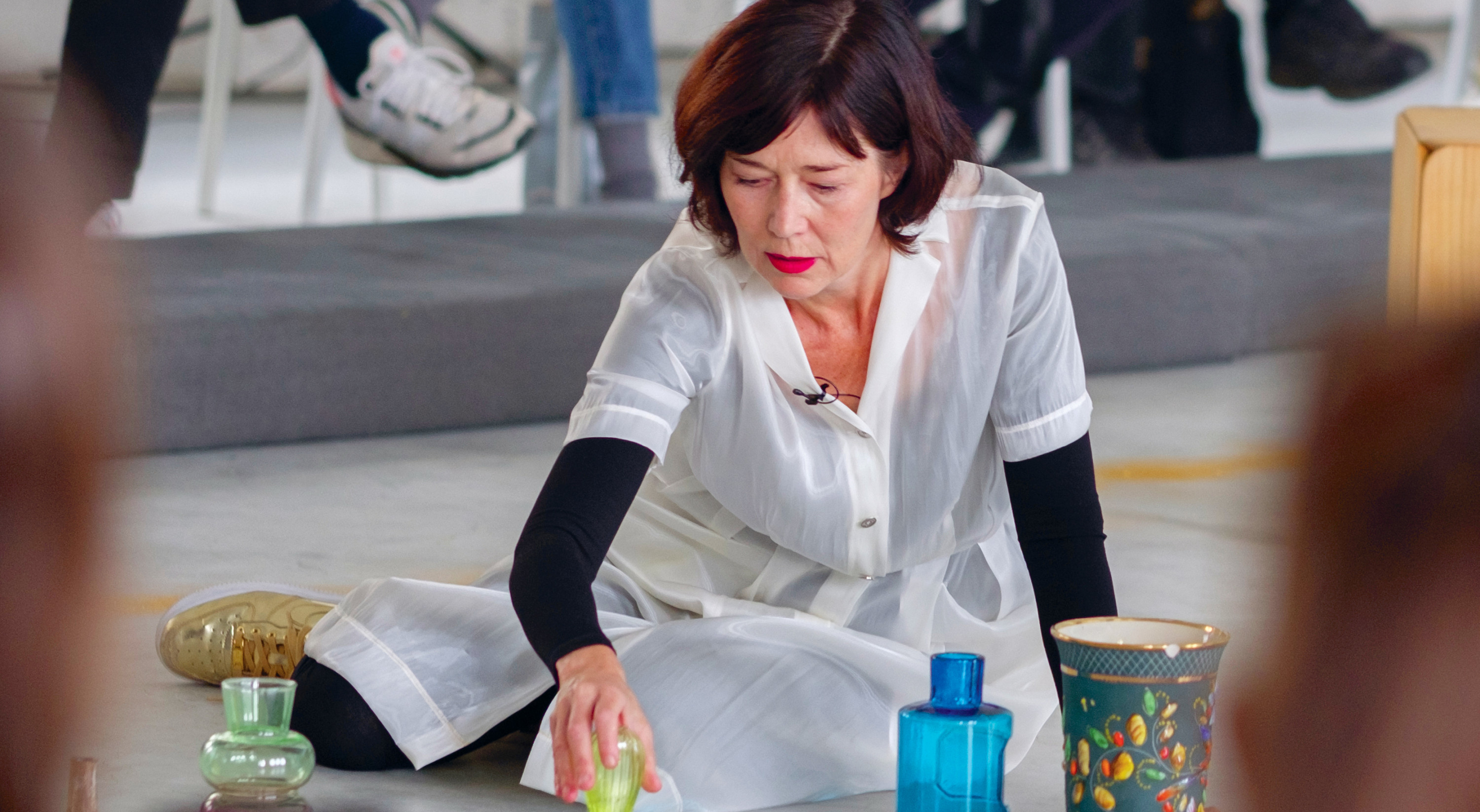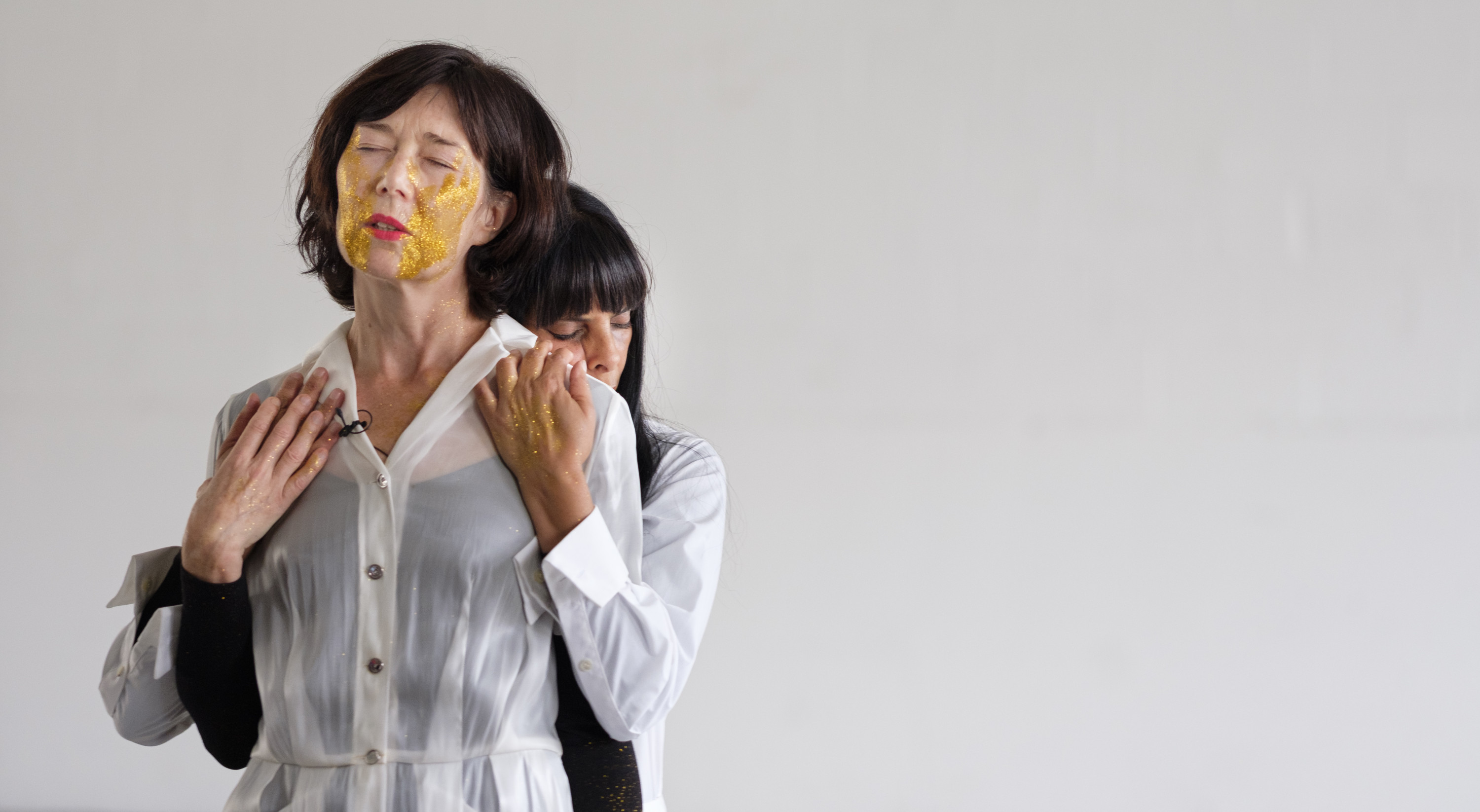Latifa Laâbissi, Manon de Boer
Ghost Party (1)
octoberoct 4 – 6
Performance Latifa Laâbissi, Manon de Boer. Sound, editing and mixing Lazlo Umbreit. Sound and stage management Clément Crubile, Louise Prieur. Stools Erick Demeyer. Translations Boris Bellay, Sis Mathé.
Production Fanny Virelizier, Damien Krempf (Figure Project), Marie Logie (Auguste Orts)
Coproduction WIELS (Brussels) ; Frac Bretagne ; Kunstencentrum BUDA (Courtrai) ; Communauté flamande ; Musée Dhondt-Dhaenens (Deurle) ; Netwerk Aalst ; Kunstendecreet
Warm thanks to Christophe Wavelet and Corinne Diserens for the meeting
Figure Project is subsidised by the Drac Bretagne - Ministère de la Culture as a conventioned company and receives support from the Conseil régional de Bretagne, the Département d'Ille-et-Vilaine and the Ville de Rennes
The Jeu de Paume and the Festival d'Automne à Paris present this show in co-realisation.
Which voices nourish artistic practices? In parallel with the exhibition "Chantal Akerman. Travelling" presented at the Jeu de Paume art centre, the artist Manon de Boer and choreographer Latifa Laâbissi conjure up a space in which voice and gesture seek to understand the meaning of artistic genealogies.
From the the 1960s onwards, female directors such as Marguerite Duras and Chantal Akerman started using use their own voices as voice-overs, opening up new cinematic spaces for the female voice that were previously male-dominated. Here, Manon de Boer and Latifa Laâbissi set in motion a dialogue about the many voices that inhabit their bodies and their thoughts. This conversation becomes the means for a performance in which the two artists share their mutual influences, revealing a genealogy of common references in the process. In Ghost Party (1), their first joint performance, Manon de Boer and Latifa Laâbissi draw upon the words of Duras and Akerman, as well as those of anthropologist Eduardo Viveiros de Castro and rapper Casey among others, in order to experiment with language, accents and voices. As the two artists speak, they create different configurations and geographies by handling a multitude of vases in various ways.

